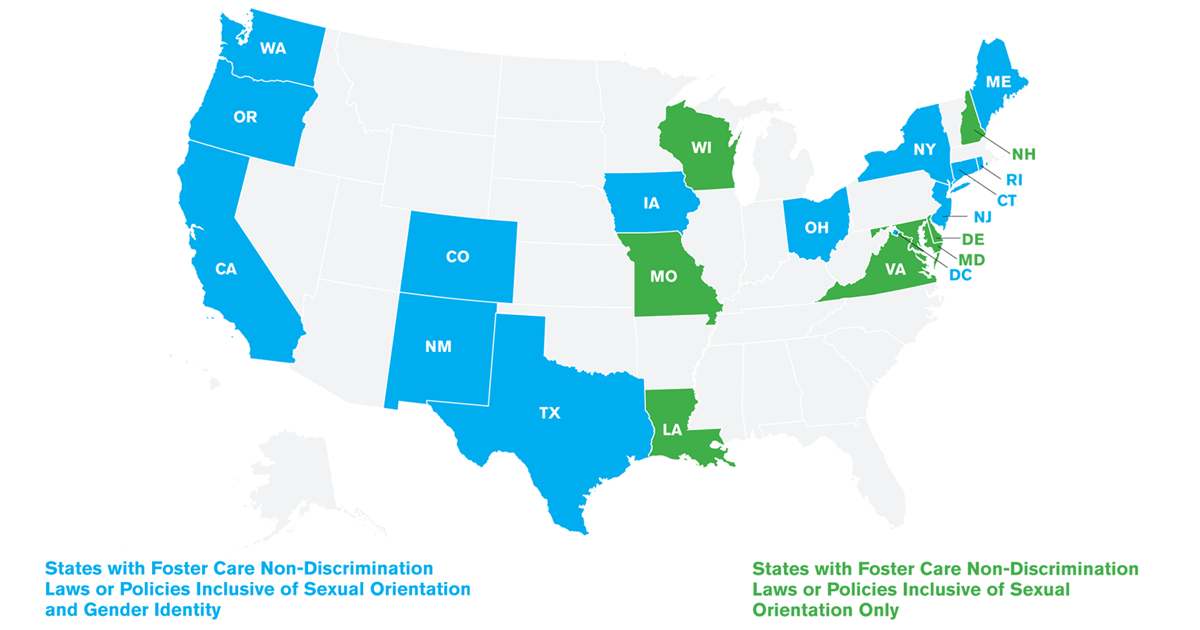It is undeniable that great progress is underway toward LGBTQ equality in the United States. Marriage equality swept the nation, the lived experiences of transgender Americans are more visible than ever before, and many youths are coming to identify as LGBTQ in environments far more welcoming and affirming than could have been imagined just a decade ago. However, this progress is not felt by all members of the LGBTQ community. Too many LGBTQ youths come out to family members only to face rejection, hatred, and violence. Those facing the most extreme levels of family rejection and maltreatment are often forced out of their homes or will run away, becoming homeless or entering the foster care system.
What is foster care?
Foster care is defined as “24-hour substitute care for children placed away from their parents or guardians and for whom the [State] agency has placement and care responsibility. This includes, but is not limited to, placements in foster family homes, foster homes of relatives, group homes, emergency shelters, residential facilities, child care institutions, and preadoptive homes.”
How many youths are in foster care nationally?
- Nearly 400,000 children and youth are in foster care in the U.S.
- ¼ of those youth are awaiting adoption (23,000) age out of care each year without permanent families.What does it mean that LGBTQ youth are “over-represented” in foster care?
Research has shown that LGBTQ youth are over-represented in the foster care system. This means that the percentage of youth in foster care who are LGBTQ-identified is larger than the percentage of LGBTQ youth in the general youth population. LGBTQ youth in foster care also face disparities – differences in experiences in care or treatment by the system.
Why are LGBTQ youth in foster care?
LGBTQ youth enter the foster care system for many of the same reasons as non-LGBTQ youth in care, such as abuse, neglect, and parental substance abuse. Many LGBTQ youths have the added layer of trauma that comes with being rejected or mistreated because of their sexual orientation, gender identity or gender expression.
Source: LGBTQ Youth in the Foster Care System | Human Rights Campaign


